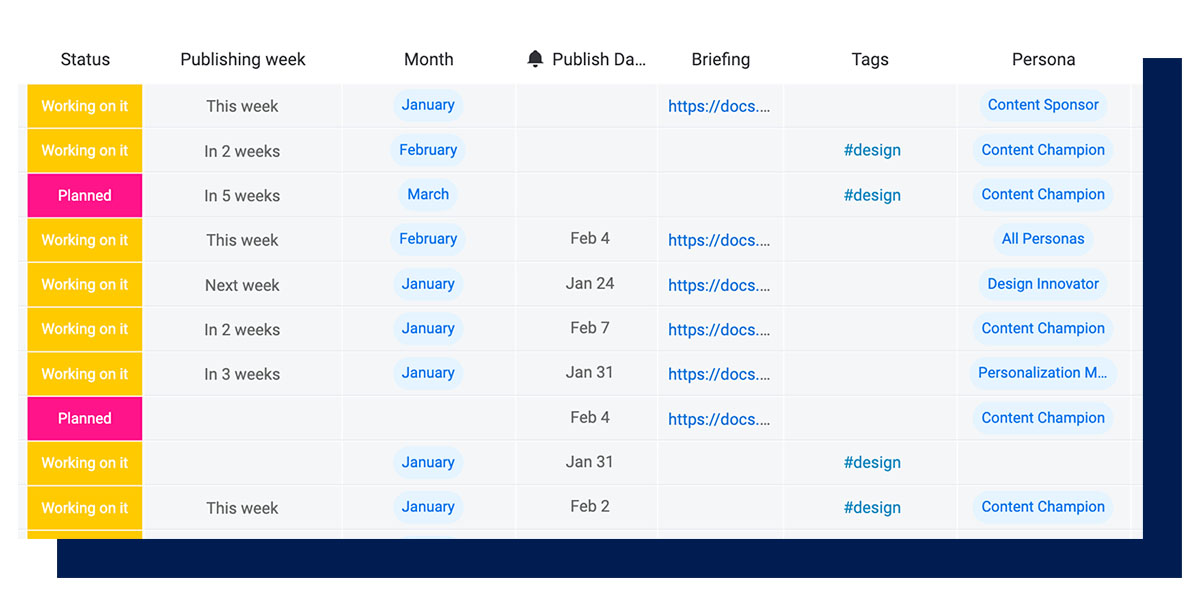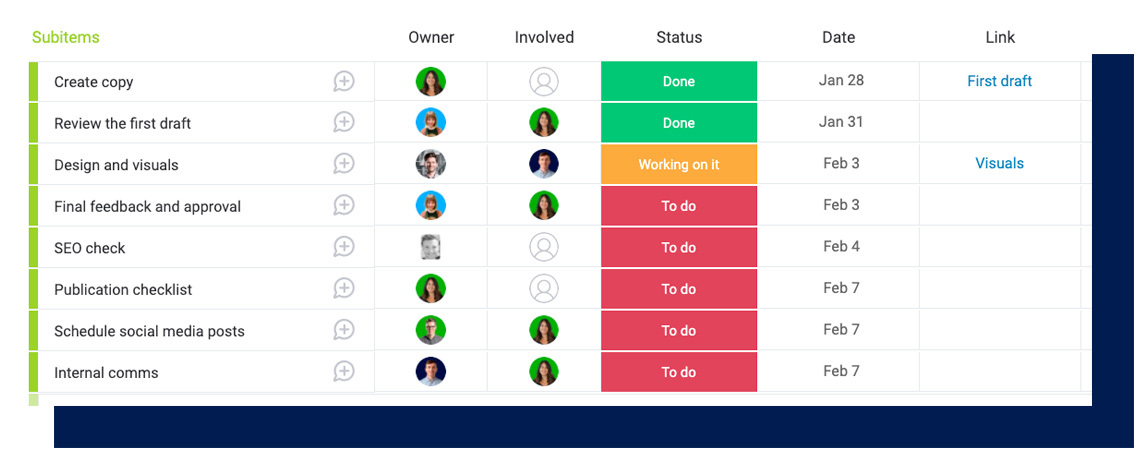Do you know that nagging feeling? The one where you’re asked about a piece of fantastic content you created a few years back.
The one that has, y’know, the great infographic that client X loved and resulted in record engagement on Twitter? Sure! You say. I’ll grab that from my carefully archived content files right away!
Then you return to your desk and put your head in your hands. You have no idea where it is, or even what it was called. You’re never gonna find it.
We’ve all been there. But we don’t need to go there again. These days marketers are blessed with a variety of tools and platforms to help us manage our marketing and sales collateral.
What's more, these handy systems don’t need hours to set up and even more precious time to manage. You simply need to determine what content needs organizing, managing, sharing, and distributing. Decide who needs to do what, and when. Then choose the right tools or platforms to make it happen.
This article will talk you through some ideas on how to manage and organize your content files and assets. We’ll recommend ways to manage version control that actually works. How to handle file sharing and how to repurpose ‘rogue content’ so it adds value to your content marketing arsenal rather than weighing it down. There’s plenty of useful info to take on board here so grab yourself a revitalizing drink, your pad, and pen and let’s get started.
How to manage marketing and sales collateral
If you’re feeling overwhelmed by the prospect of managing your marketing collateral, give yourself a break. The fact that you have created enough great content to necessitate an organizational tool means you are taking positive steps to engage in a meaningful way with your audience.
Now, all you need to do is get your content ducks in a row and keep creating fabulous collateral that attracts, engages, and converts!
Managing content isn’t necessarily such a challenge for the things that live on your website. It’s the other assets that are probably giving you a headache; the reports, white papers, factsheets, brochures, digital magazines, newsletters, research, case studies… The list goes on.
Here are some steps for sales and marketing collateral best practices to get you started.
Keep an up to date inventory of your content assets
Effective sales and marketing collateral tracking is the glue that holds your whole strategy together. Therefore, creating an inventory of all your content assets should be a priority task. While this process can be quite labor-intensive it is also a great opportunity for rediscovering content that you can reuse and repurpose. We will go into this in more depth shortly.
How you organize your inventory will depend on a number of factors including the nature of your business, the kinds of collateral you produce, and the marketing channels you use.
You could categorize your content by buyer personas, the stage in the customer journey, or which department uses the content. You could even create a separate categorization system for your sales team to use, based on their own workflows so they can access the sales enablement collateral they need quickly and easily. Whatever works for you. Though make sure when you get to the update stage you apply the refreshes to all your archives.

Develop a content creation workflow
Managing your marketing and sales collateral starts at the planning or ideation point, rather than when the asset has been produced. Therefore, you need to start by defining and developing a content creation workflow for all your team to work from.
This should include every stage of the content creation process. For example, the process for a blog might include briefing, writing, reviewing, editing, approval, publication, distribution, and performance analysis.

You can then map your team’s roles and responsibilities to the workflow including the various stages for review and sign-off. Ta-da! You have a simple, straightforward, and standardized process that everyone can access.
Repurpose sales and marketing content
Every brand has rogue content lurking in its archive. Some of this will be cringingly bad, times and trends change, after all! But you may find that some content can be updated for your current marketing activities.
Adapting your assets for different channels or repurposing them for a different audience not only saves you time but also demonstrates brand consistency and reinforces your marketing messages. So, rather than reinventing the wheel, you’re simply adding a nice new set of tires!
Learn more about repurposing content correctly here.
Optimize the way you share your files
At Foleon we have literally thousands of files being shared internally and externally on a daily basis. Our hardworking teams cannot collaborate or operate effectively without seamless file-sharing systems.
When you are researching which platforms and tools will help you organize and manage your sales and marketing collateral most effectively, try to find a solution that provides a simple and secure process for sharing, editing, and storing digital files.
Most cloud-based solutions should have strong data protection and privacy credentials that can be accessed remotely and can handle even very large files without impacting performance.
Make sure all users understand the sensitivities and obligations around sharing data. There’s little point in investing in a business-grade solution if your colleagues don’t know how to use it!
Make sure your marketing and sales collateral is accessible
The world of sales and marketing moves fast. When a hot lead requests clarification on the workings or benefits of a product, your sales team needs access to that how-to ASAP before they lose them to a competitor.
Likewise, when you are sending out a personalized ebook to a potential new customer you want to have the newest version at your fingertips. You don’t want one of your team to include an out-of-date graphic or incorrect text file, after all.
Create a system where you can manage your content in a centralized location that is accessible to all relevant stakeholders but where you can easily control access and permissions. This helps you protect privacy and security and also means only the most up-to-date and correct content assets are used at any time.
How to organize marketing and sales collateral?
When it comes to managing and organizing your content, there’s some crossover with marketing and sales collateral best practices. We’ve covered some of the more strategic points above. Let’s get down to some of the more systemic and governance-related aspects of improving your content management.
Create a centralized location — and keep it updated
We already mentioned the importance of having a centralized portal or platform for all your sales and marketing collateral. Rather than having your files spread across various drives this approach ensures a single source of truth for all of your marketing collateral and means you don’t risk five-year-old logos or redundant product descriptions being used.
Once you have your portal in place make sure you keep it updated as you go. Every user and stakeholder should be encouraged to play their part in keeping it up to date but it’s a good idea to assign ownership to one member of your team. This will be the person that everyone buys a drink for at the Christmas party.
Create the right culture
One of the trickiest parts of setting up a sales and marketing collateral management system is making sure it is looked after properly and optimized over time. Team members come and go and new platforms and tools are adopted and left by the wayside on a relatively regular basis. Your success depends on getting buy-in from your team and keeping them interested on an ongoing basis.
Here are some tips on how to make that happen.
- Assign roles and responsibilities. Goes without saying really, but if your colleagues don’t know what is expected of them and how they fit into the wider picture they won’t be able to play their part. You should be able to easily assign and reassign roles and responsibilities on your content management platform and update all stakeholders on project progress. You could also consider assigning a specific owner to each content type to reduce the risk of bottlenecks.
- Promote brand governance. It’s a good idea for someone to own this part of your collateral management. They can lead the way by educating all stakeholders on the importance of promoting brand governance throughout your marketing activities. They can also own the responsibility for auditing your archives for files that breach your brand guidelines and removing any duplicate content that clogs up storage space.
- Say thanks. When you floated the idea of introducing a marketing and sales collateral management system you probably felt a few hearts sink among your colleagues. The announcement of new systems sometimes causes worries about having to take on extra work for little long-term gain. Naturally, you will have done an amazing job at getting all your systems in place and making sure everyone understands what they need to do and when. Now is the time to say thanks to all the people who are helping you make your systems a success. Show them how it is helping win more business and save time and money. Tell them your plans for making it even more amazing in the future. Then make that round of coffees you’ve been promising.
Think of the long-term benefits
So we reach the end of our guide to improving your marketing and sales collateral management in 2025. We hope we have lived up to our promise and given you some food for thought with devising and delivering the systems and workflows you need to organize your valuable content assets.
As long as you keep your end-to-end content marketing processes in mind, make sure you get complete buy-in from your stakeholders, and keep revisiting your strategy on a regular basis, you shouldn’t go far wrong.
It takes a little time to get new systems up and running. But think of the long-term benefits. Imagine if you didn’t have to deal with all those organizational pains, but could spend more time researching, creating, and distributing content instead? Our own team has reaped the rewards and has reported on their various successes in our Marketing Power Plays Guide.
Once you're done reading their stories, get yourself into action and get your own management setups in place. And keep producing that fabulous content. Your team, your current audience, and your future customers will thank you for it!



